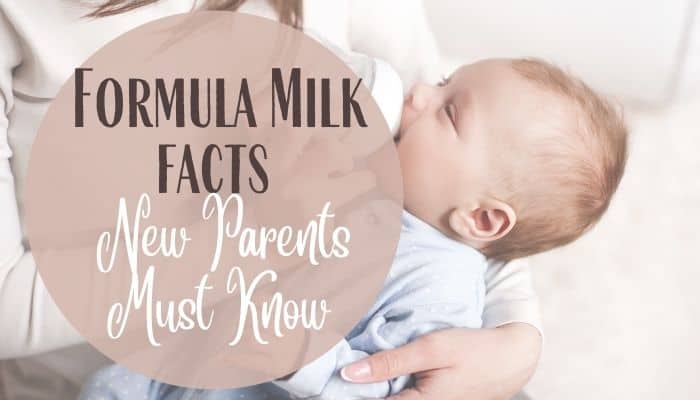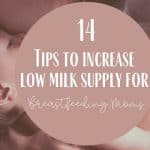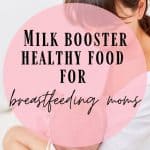Supplementing newborns with formula is a debatable topic for many moms. There are times when moms get exhausted with frequent wake-ups, late-night breastfeeding, sore nipples, hurting breasts, engorgements, they may want to switch to formula feed, as it is easy for moms to some extent.
No matter what method you choose to feed your baby, your baby is well-fed, nourished, and healthy, that’s all that matters.
This post may contain affiliate links. Please read our disclaimer for more information.
Non guilty reasons to choose the formula feed for the baby
Some of the non-guilty reasons to formula feed are:
- If a new mom is not producing enough and the baby is not gaining enough weight rather losing more weight, it is advisable to consider formula feeding for the baby.
- If the baby has a medical condition like dehydration, jaundice, or any other latching or feeding problems, moms may choose formula at this point.
- Mothers who are struggling with milk supply or have physical or medical limitations to breastfeed may go for formula feed for the baby.
- And clearly, if moms just do not want to breastfeed by choice they can formula feed with no guilt at all.
Things you should keep in mind while introducing formula to the baby
1. Formula intolerance and sensitivity
Well, if you supplement formula feeding, you have to know there are many brands and some babies are lactose intolerant. They might be sensitive to some formulas. You have to watch out for or see any signs that your baby is not adjusting well to the formula you are feeding.
For some babies, extra fussiness, gas, spitting up, reflux, are the ways to reject some type of formula. However, still, most of the babies adjust well to any form of formula type, brand.
Find out why is your baby spitting more than normal?
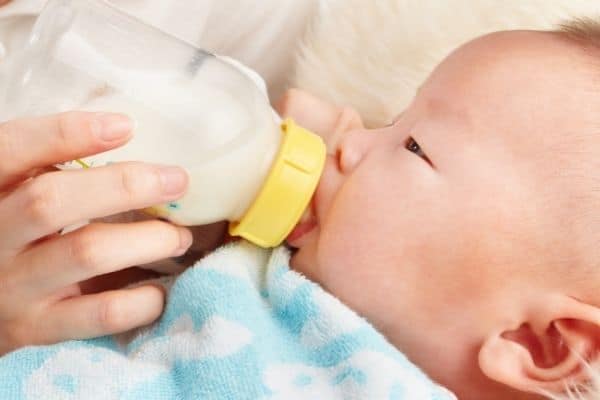
2. Formula must be iron Fortified
When you buy a formula you have to make sure it is iron-fortified.
You have to make sure the formula is iron-fortified as it is very essential for growth, development, and giving oxygen to muscles.
DHA
Two fatty acids are known as DHA (docosahexaenoic acid ) and ARA (arachidonic acid) have become a mainstay in infant formulas. These fatty acids are thought to be crucial for brain and eye development in babies.
Infant formulas are generally found in ready-to-feed, concentrated liquid, or powdered form.
3. Baby formula is measured in ounces
Baby formula is fed in ounces. 1 scoop for every 2 ounces of water.
2 scoops for 4 ounces of water.
Ready-to-feed formulas are in 2, 6, or 8-ounce containers. The number of bottles varies in each pack.
Cocotomo 5 ounces Baby bottles
Cocotomo 8 ounces feeding bottles
Nanobebe No colic bottles 9 ounces bottle

4. Formula storage
Unopened cans can be stored at room temperature. Opened cans can be stored for up to 24 to 48 hours depending on the instruction on the pack. If opened, should be consumed within an hour if stored at room temperature.
When you buy a powdered container, you have to make sure what size you choose and how much you are going to consume. These powders once opened should be consumed within 30 days after opening.

5. Safety instructions
- Before you prepare formula for your baby you have to thoroughly wash your hands.
- Carefully read the storage instructions on the product label for preparation, use, and storage.
- Do not use prepared formula if it has been left unrefrigerated for more than 2 hours.
- Once you have fed your baby from a bottle, resist the urge to refrigerate because the bacteria from your baby’s mouth can multiple even in the refrigerator.
- Discard the remaining formula at the end of each feeding if it has been more than an hour.
6. Bottles and nipples
For newborns, the 4-ounce bottle is a perfect choice.
When the baby gets bigger you can start using 6 to 8 ounces bottles.
When you choose a bigger bottle make sure you also buy nipples for 3 months and 6 months as required to have better flow and better feeding experience.
Angled bottles and those with disposable bags, built-in vents or flow, may help in swallowing less air while feeding.
An added benefit of disposable bags is you need to wash only nipples in the end.

7. Heating breastmilk and formula
Heating prepared formula in the microwave is not recommended. You can warm up the water in the microwave and then add formula.
Use bottle warmers for prepared formula or breastmilk. Microwave has the potential to destroy antibodies found in breastmilk and also heat unevenly.
Do not use the microwave to warm up breastmilk.
8. Newborns bottle feedings
The first feeding should be 0.5 to 1.5 ounces for the first few feedings. It can go up to 2 ounces for the first couple of weeks. Burping is essentials after each feed even it is one drop of milk.
Later feedings by the end of the first month, your baby should be taking 4 ounces per feeding. This can be increased up to 6 to 8 ounces by 6 months of age.
After the first several days, most newborns drink between 12 and 24 ounces during the course of a 24 hour day.
Moving forward by 6 months babies need 32 to 40 ounces per day.
On average breastfed babies take every feed for about 2 to 3 hours, whereas formula-fed takes 3 to 4 hours for each feed
Any newborn who refuses to eat every 2 frequent feedings, must be evaluated by the doctor.
Most importantly, babies must gain weight whether they are formula-fed or breastfed babies.
Prepare baby’s bottle with the right amount of milk your baby can take in at one time.

9. How to clean up baby feeding bottles
Although all ready-to-feed bottles come with packages nipples that are safe to use, however it is still recommended to sterilize all feeding supplies and pacifiers before using.
You can buy a sterilizer available in the market or else you can sterilize your supplies by putting them in boiling water for about 5 minutes.
Washing bottles after every feeding is also practiced by many parents and that also kills most of the germs.
Invest in bottle and nipple brushes that are inexpensive and invaluable for cleaning hard-to-reach places.
You can buy a dishwasher safe basket to hold all your small feeding supplies to wash in a dishwasher.
10. Double sipping
Resist the urge to double sip the nipple as the bacteria increases on the nipple that is sitting for a long time after a few sips from the bottle.

11. Growth spurts – when you should increase feedings
When babies grow their needs, and eating requirements grow too. That means increased hunger as your baby keeps growing. Make sure you incorporate a reasonable amount of variability in your baby’s routine every day.
12. Cluster feeding
When you choose to feed on demand is called cluster feeding. When a baby decides to eat several times of the day if you are not following 2 to 3 hours timeline.
Babies who eat well during the day may end up sleeping at stretch at night.
Why newborns need vitamin D
Vitamin D important nutrient that helps prevent rickets and strengthens the immune system and reduces the risk of diabetes and other chronic diseases.
Chances are your pediatrician is going to provide you with vitamin D drops on your baby’s first checkup.
Newborns need vitamin D supplements who are breastfed. Add a few drops to breastmilk bottles or apply on the nipple right before latching the baby to the breast.
Formula-fed babies who do not drink at least 32 ounces of formula every day.
When you should give baby a Pacifier
You can choose to use a pacifier for your baby if she is super fussy and sucking on fingers even after getting a good number of feedings.
Be sure not to offer pacifiers when your baby needs to be fed and hungry.
Babies seem disinterested in pacifiers when they do not see anything coming out of them. Keep trying if you feel your baby is still in search of breasts just for comforts not because of hunger.
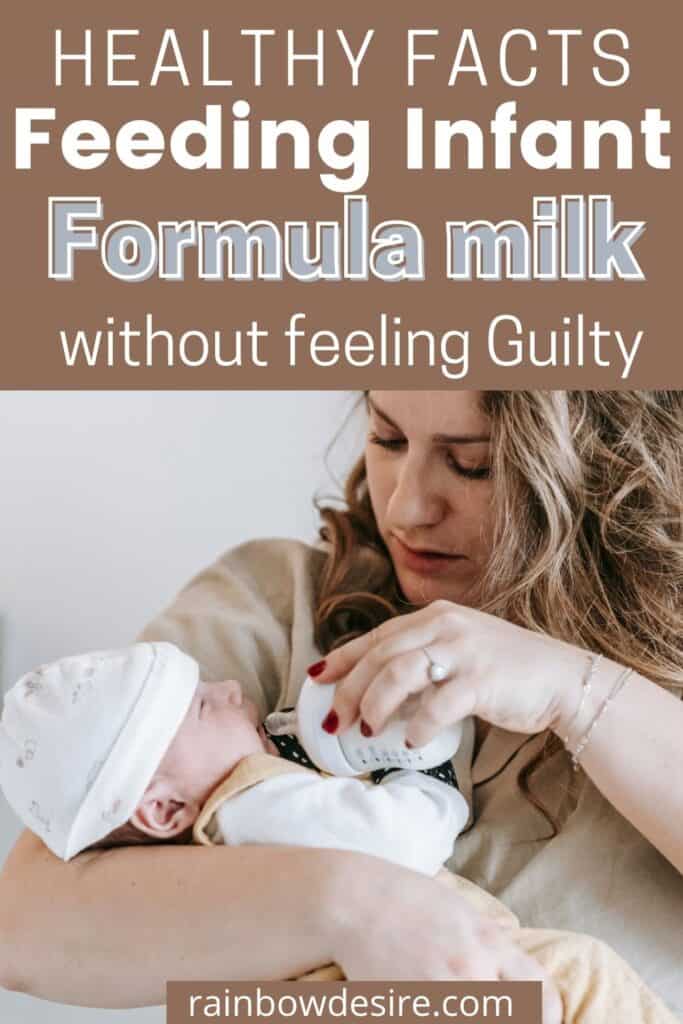
Related
Why does a baby throw up after feeding formula?
Choose organic infant formula for the baby.
Why you should choose a combination feed for your baby?
Baby gas issues – how to relief gas instant for mom and baby

